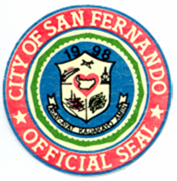For the San Fernando Sewerage and Septage Management Project, BNS-BORDA has developed a proposal for a model septage treatment facility that requires no electricity to operate, produces an effluent that is clean enough to discharge to surface water, and creates a soil amendment as a byproduct that may sold or given to area farmers for use on their fields. BNS-BORDA is proposing their model septage treatment facility for use in San Fernando City.
The BORDA model uses anaerobic treatment to reduce the bulk of the organic matter in the septage through the processes of settling and digestion. The remaining effluent is filtered and then treated aerobically in constructed wetlands where it undergoes further treatment. A sludge drying bed thickens the solids so that they may be easily transported off site and applied for agricultural use. The system is relatively easy to operate and cost-effective.
Five treatment stages are used in the BORDA process:
Stage 1: Septage Receiving Station
Once approved for off-loading, the truck operator will connect the hose to the discharge port on the truck tank and unload the septage into a sloping channel that is fitted with screens to remove the larger solids. The screenings will be collected and dried and the remaining septage will flow to the next stage in the receiving station, which is a sand trap. Sand and grit can clog downstream components and must be removed. The removed sand and grit are dried, and then brought to the landfill for proper disposal.
Stage 2 -Anaerobic Stabilization
 Anaerobic stabilization occurs in a closed tank where the screened and de-gritted septage is allowed to sit for 15 days. During this time, anaerobic bacteria consume the organic matter in the waste, which accomplishes a considerable amount of the treatment. One byproduct of the digestion process is the generation of sludge. It is removed from the bottom of the tank and sent directly to the drying beds. This material when dried becomes an excellent soil amendment for agricultural purposes, as it contains organic matter and nutrients.
Anaerobic stabilization occurs in a closed tank where the screened and de-gritted septage is allowed to sit for 15 days. During this time, anaerobic bacteria consume the organic matter in the waste, which accomplishes a considerable amount of the treatment. One byproduct of the digestion process is the generation of sludge. It is removed from the bottom of the tank and sent directly to the drying beds. This material when dried becomes an excellent soil amendment for agricultural purposes, as it contains organic matter and nutrients.After digestion, the effluent flows to the next stage in the treatment process, which is the anaerobic baffled reactor.
Stage 3 - The Anaerobic Baffled Reactor (ABR)
 The ABR is a partitioned underground tank that is designed to treat and clarify wastewater. Like the process in Stage 2 above, and as the name implies, the ABR is also an anaerobic process.
The ABR is a partitioned underground tank that is designed to treat and clarify wastewater. Like the process in Stage 2 above, and as the name implies, the ABR is also an anaerobic process. Over time, solids not removed in the anaerobic digester will settle and accumulate at the bottom of the ABR. In each compartment of the ABR, wastewater is directed upwards through the sludge layer where remaining solids are trapped. This flow pattern continues as the wastewater passes through the ABR tank, becoming cleaner at each successive compartment. For the BORDA system proposed for San Fernando, the tank is designed to allow for a 30-hour detention time, or 1.25 times the average daily flow of 15 cubic meters per day.
Stage 4 - Aerobic Maturation - Ponds or Wetlands
In addition to removing the dissolved organic matter in this stage, pathogens are also reduced in number as the maturation ponds are filled with microorganisms that prey on pathogenic bacteria. Additional disinfection can be achieved through the introduction of a small volume of chlorine if needed.
Stage 6 - Agricultural Reuse of Biosolids
The BORDA model uses sludge drying beds, which are covered to shed rainwater, but open to allow air flow over the biosolids. This accelerates the drying process. Operators will test the biosolids periodically for moisture content to determine when they are acceptable for removal. This requires between 15 and 45 days, depending up the season. Two drying beds are provided so that they may be rotated to maximize their efficiency.
Operation and Maintenance
Under the BNS-BORDA proposal, two operators will be provided for the first year to accomplish all of the required operation and maintenance. The city will provide up to four trainees to learn the operations tasks and build the capacity of the public works department. After this initial year, the facility will be turned over to the city.
For more information about the BORDA septage program, view their case study on the Banda Aceh septage treatment project in Indonesia on-line at:
http://www.borda-sea.org/modules/news/article.php?storyid=91












